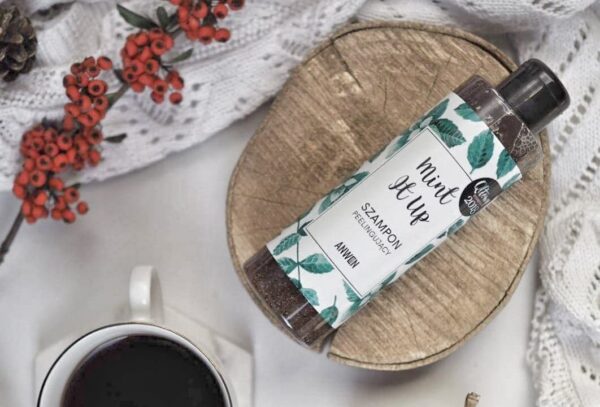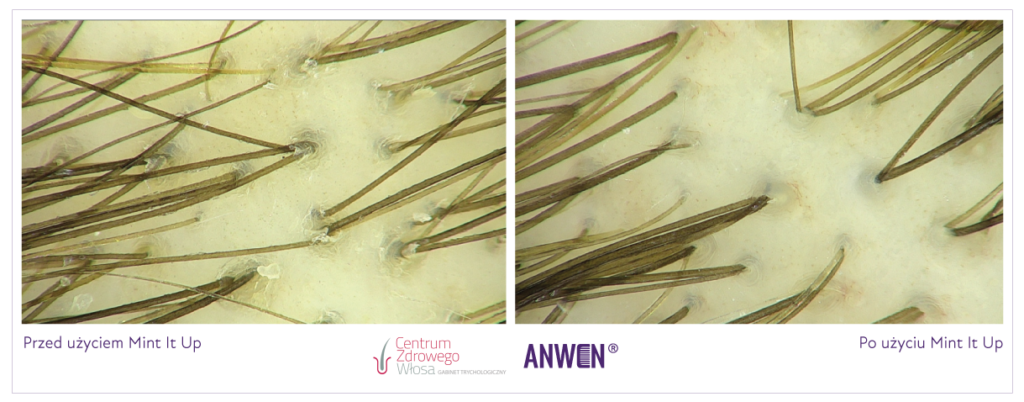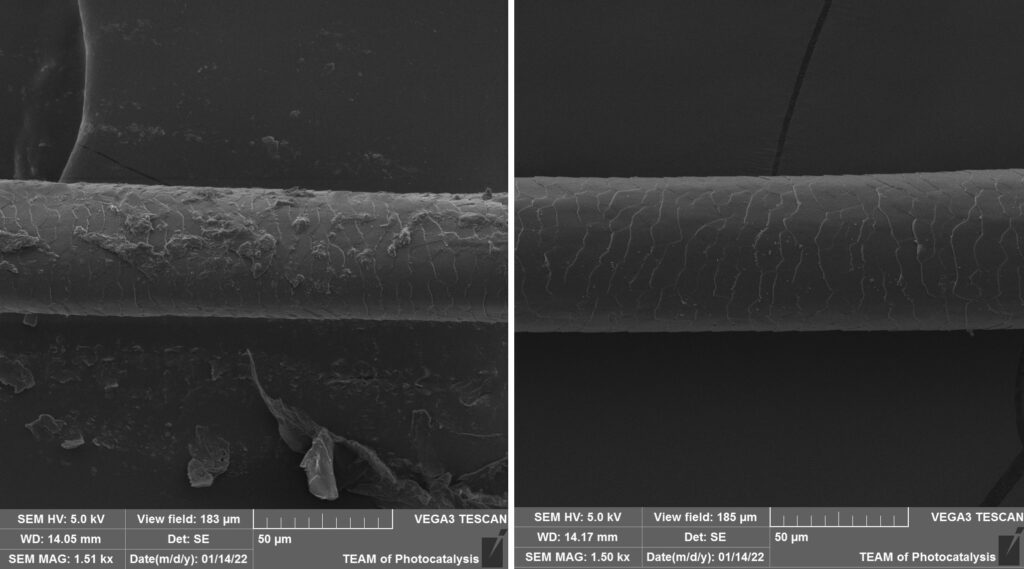Mint It Up shampoo is one of our first products. Thanks to apricot kernel peeling particles, it perfectly cleanses the scalp and hair. It has been with us for five years now. How does it work? Can it be harmful? And who should use it? Take a closer look at Mint It Up!
Mint It Up - the concept and the beginnings
Mint It Up shampoo is one of Anwen’s first products. Five years ago, when it was launched, the knowledge about hair care and the market of raw cosmetic ingredients were completely different from what they are today. When creating Mint It Up, we focused on natural exfoliating materials. After experimenting with dozens of various options, we decided on ground apricot kernels in the end. Their effect was exactly what we expected. The skin was visibly refreshed, and dead skin cells were removed. The particles also did not irritate the scalp during the massage performed when shampooing. A microcamera study by a trichologist confirmed the effectiveness of the new shampoo. And a great number of our clients fell in love with it from the very first use.
Over time, posts have appeared on the internet about the allegedly harmful effects of scrubbing particles on the condition of the scalp and the hair surface. Photos of peeling particles under a microscope with sharp edges appeared here and there. Apparently, they were sufficient to make ta claim about the harmful effects and micro-damage caused to the scalp and hair surface by the peeling particles.
Years of online work experience have made us not succumb to internet theories, experts, and hardly verifiable research results. At the same time, we have our clients’ best interests always at heart when creating hair care products. For this reason, we have decided that if there is even the slightest doubt about one of our products, we have to do all we can to double-check it and, if necessary, improve it.

Can exfoliating particles have a harmful effect on the scalp?
Naturally, the first step was to conduct another application study led by a dermatologist. This time it was focused on the possible negative effects of the kernels on the condition of the scalp. The study was carried out for six weeks on a sample group of 25 people. The study was performed on healthy skin without irritation or lesions. The participants were informed about the purpose of the tests. They were also instructed on the proper application of the product.
A trichoscopy study was performed before and after six weeks of regular (once a week) product use. The results proved to be positive, as none of the 25 study participants experienced any adverse reactions. The proband’s scalps were in excellent condition (as confirmed by the trichoscopy examination). The majority of the tested people were satisfied with a regular scalp cleansing with Anwen – Mint It Up exfoliating shampoo.



Can Mint It Up could damage the hair?
This first step was over. However, the second issue remained to be tested: the possible micro-damage to the hair as a result of the scrubbing particles. Such studies have not been carried out before the product launch, and they are not standard tests necessary to register a cosmetic product. So the decision to perform them was primarily motivated by our curiosity, then formal procedures or regulations.
We already had previous experience with the SEM microscope, but we needed to design the study to demonstrate better the real impact of the apricot particles on the hair surface. Initially, we planned to take a hair sample before and after using the shampoo and then compare them to the electron microscope images. At this point, however, some doubts arose. What if the hair selected for the study had minimal contact with the particles? We extended the test by adding a radical element. So we extended the test by adding an extreme element here. One of the test hairs had been hand washed again by scrubbing it thoroughly all along its entire length with the scrubbing shampoo. We wanted to make sure that the whole surface of the hair was exposed to the scrubbing particles.
The picture below shows the hair after such “hardcore” washing (on the right side, on the left side for comparison – the same proband’s hair, but taken before the washing):
Proband 1:

BEFORE USING MINT IT UP
AFTER USING MINT IT UP
Proband 2:

BEFORE USING MINT IT UP
AFTER USING MINT IT UP
The result was similar for both low and midium and high porosity hair. There is no damage visible in the photos above. There is one conclusion. We have solid research that has confirmed that exfoliating particles do not affect the scalp or hair negatively. Mint It Up will remain in the product portfolio as one of the exfoliating shampoos. However, it is essential to remember that this product is not suitable for everyone! Gentle, enzyme-based exfoliating shampoos will be more suitable for sensitive skin, irritated skin, or skin with lesions. In this case, we do recommend consultation with a dermatologist and/or trichologist.
SEM study - methodology description
The study was designed to exclude or confirm damage to the microstructure of the hair due to friction of apricot kernels contained in the shampoo. The study was performed in the Electron Microscopy Laboratory at the Department of Chemistry, Jagiellonian University. The material consisted of hair samples taken from 3 probands with different hair porosity by plucking from the temporal region of the scalp (before and after using the shampoo three times). The shampoo was used as recommended, and each time the probands performed a scalp massage for several minutes. Additionally, hair taken from a proband with medium porosity hair, after three shampoo applications, was subjected to washing with the shampoo, with simultaneous intensive rubbing with apricot kernels contained in the shampoo all over the hair shaft. The hair was rinsed with water and allowed to dry.
Prepared hair slides, 1 cm in length from the bulb, were placed on subject tables and viewed using a TESCAN Mira3 scanning electron microscope.The observations were carried out at magnifications of 2000-5000x. In the electron microscope field, the microstructure of hair and damage occurring on its surface can be observed with great accuracy and precision.
Before using shampoo, all observed hair had intact cuticle continuity; scales were arranged in a tile-like manner with softly finished edges and covered with dirt particles, which did not reveal mechanical damage. After applying the shampoo in the microscopic image, the hair was free of impurities. The cuticle structure remained unchanged, and scales had a regular arrangement. No significant deviation of the scales or signs of mechanical damage to the hair surface were observed.

